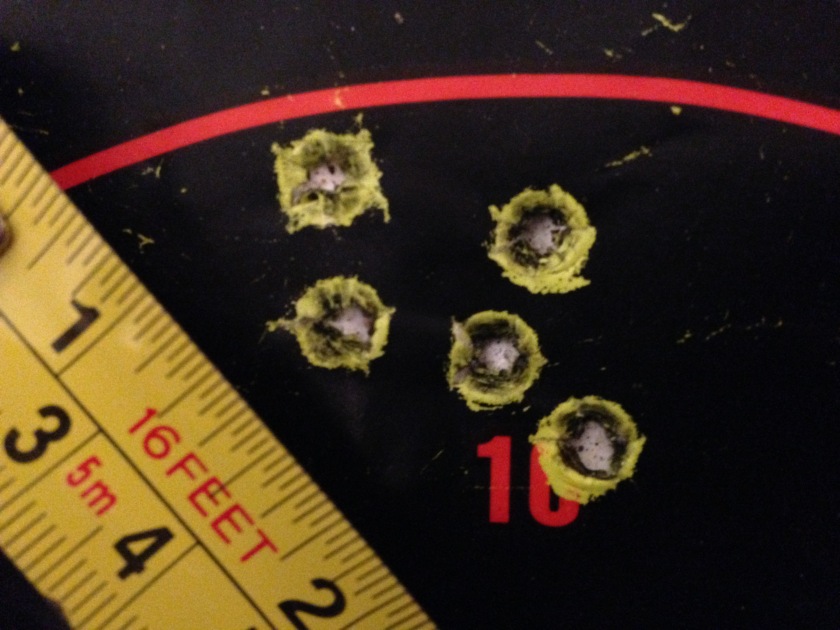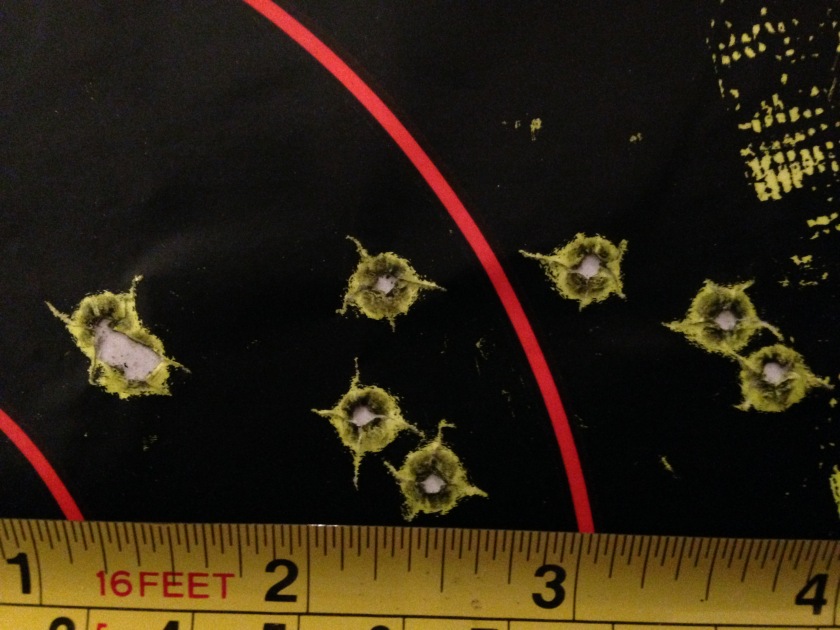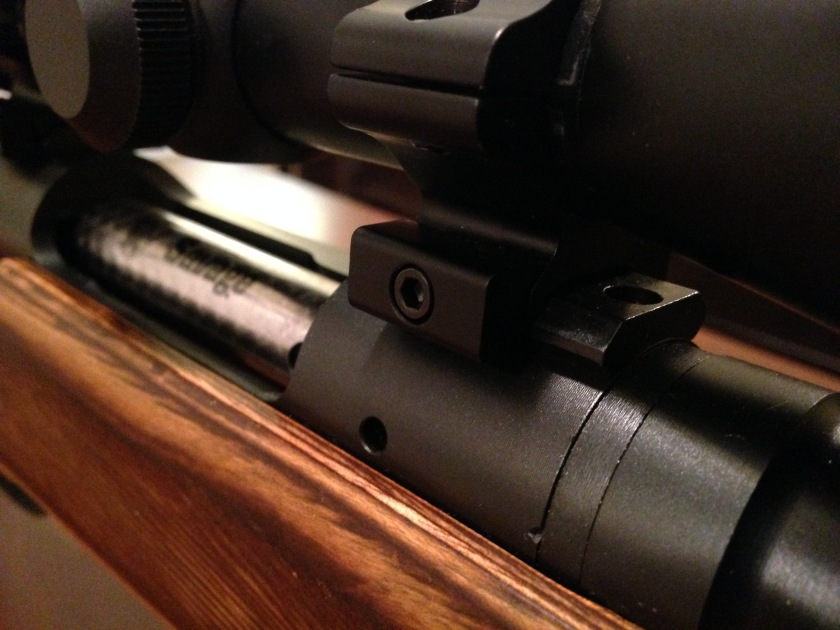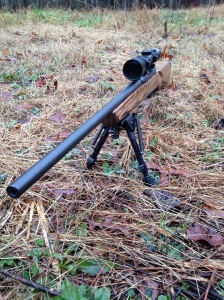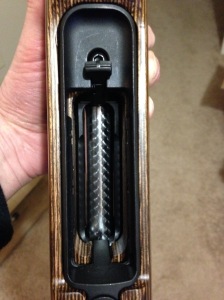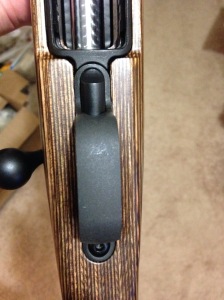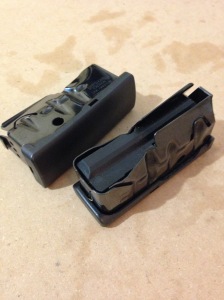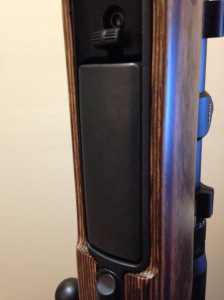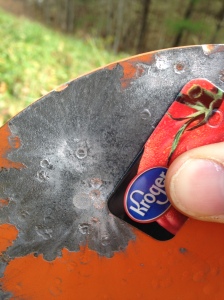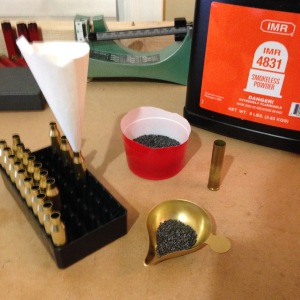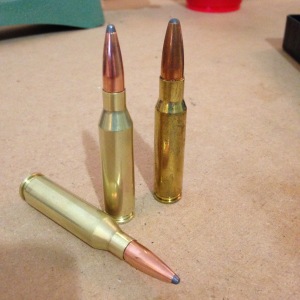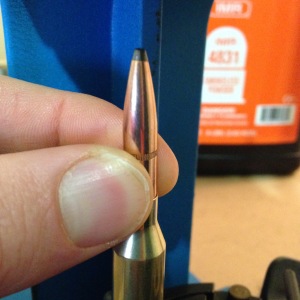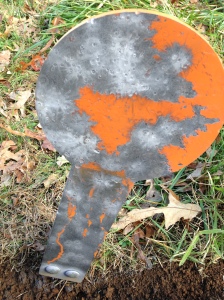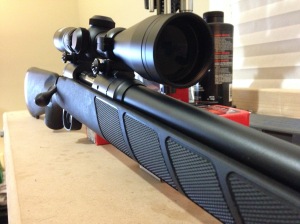It’s been over 1,300 reloads, several pounds of powder, and many hours spent at the range. I figure its time to wrap this one up. What started as another economy bolt action has turned into an upgraded project gun. And even though the shooting will continue, I feel the review has run its course.
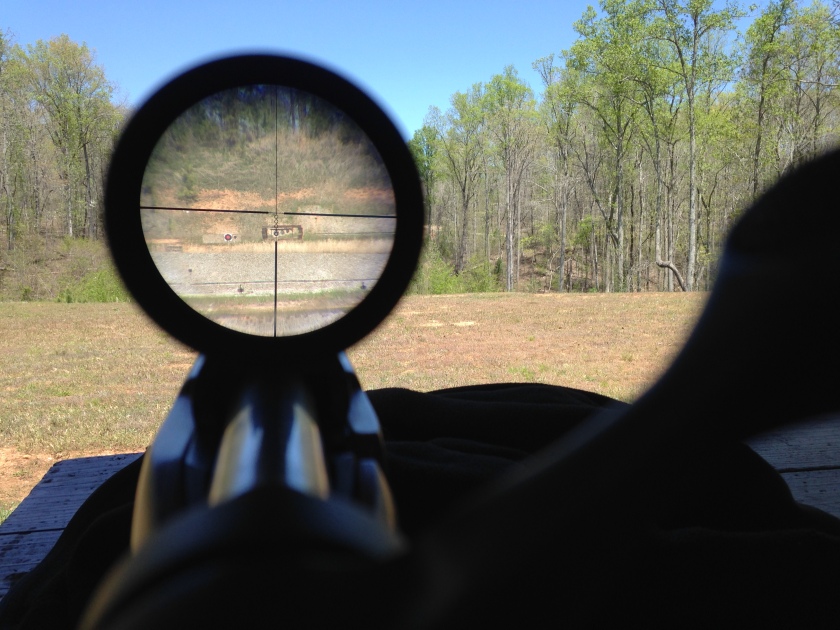
Much time was spent plinking steel at 545 yards.
I spent a lot of time with this rifle… a lot. Let’s get some of the preliminaries out of the way. Durability: this rifle is like any other of comparative value. I did not expect an outcome different than what I have experienced. Everything has held up fine. The receiver, barrel, bolt assembly, steel bottom metal. Aside from a little wear of the rear of the receiver and some finish loss on the barrel from leaning against a wall everything is tip top.
Appearance: if you remember the picture from the first update on this review series then you know what it looks like. After switching the stock and bottom metal nothing else was changed. I understand finish is a concern among some shooters. The Savage sports a matte finish and does not lend itself to scratches or the other peculiarities of a delicate bluing. I didn’t charge through prickly thorns while pursuing hogs with the gun but after two years I have not noticed any appreciable marring due to normal use.
Accuracy: This is a touchy subject. Let me start by saying I shot most groups while seated at a concrete bench. The bipod sat atop an old sweatshirt to dampen the effect of the rubber feet dancing on a hard surface after each shot. The butt stock was cradled in a sand bag rest. The 20% of shooting that didn’t include those parameters featured prone shooting in the woods, kneeling, standing, etc.
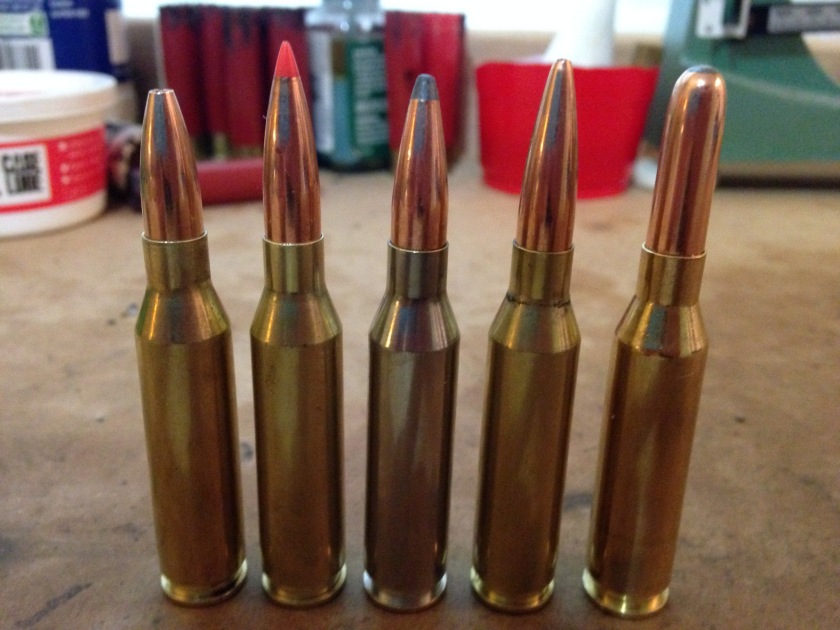
The .260 Rem allows a variety of bullets from varmint and target to deer and black bear.
The rifle does fine. Is it great? It worked great for me. The question is – does the accuracy I experienced meet your expectations? I said at the beginning my primary use was shooting steel and the occasional paper to sight in a load. My recommendations for this rifle are as follows: To the paper punching sub moa crowd: as the rifle comes I’m going to say no. Even with a little work I wasn’t able to achieve half moa. I understand a lot of accuracy shooting rests on the shooter but my best groups were around .75” on a good day and 2” on a not so good day. I think you’d be better off building a rifle from a receiver or at the very least bedding the action and stock, getting a better scope, lightening the trigger (I reviewed mine as it came from the factory), maybe switching out the barrel.
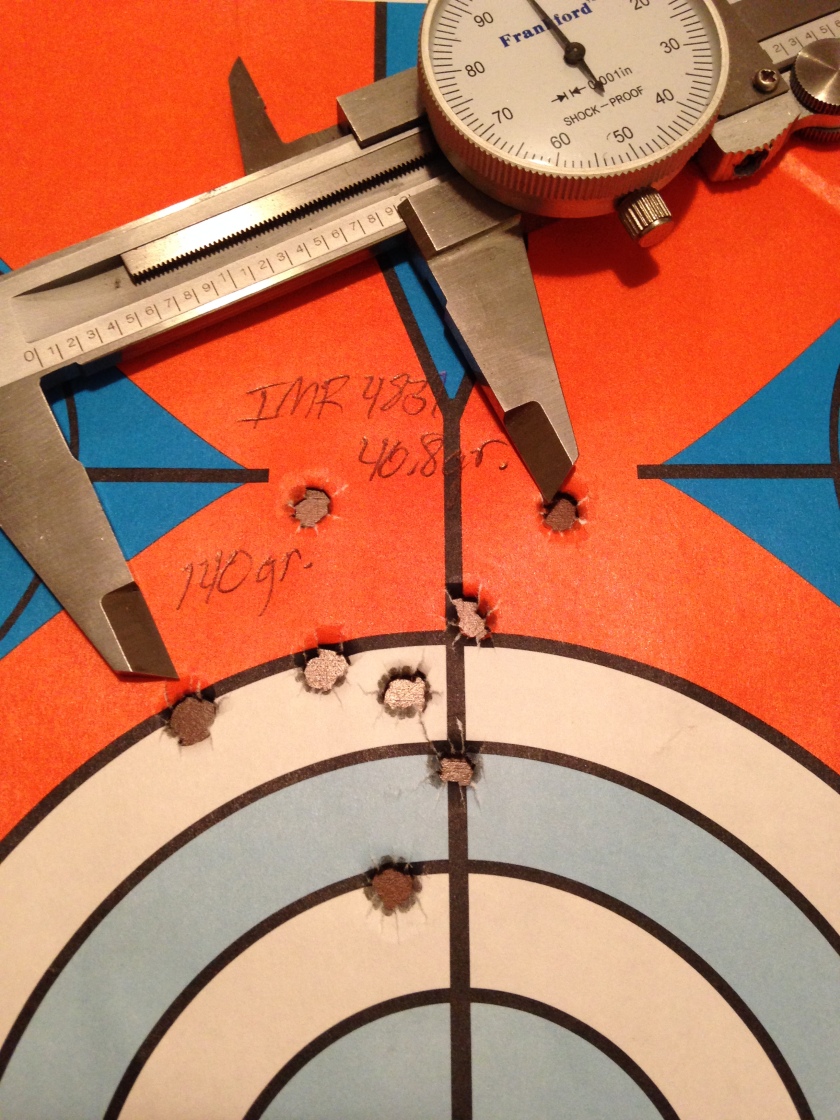
Lackluster 8 shot group at 100 yards.
That leads me to my next point; what do I think about the Savage barrel? Absolutely impressed. There’s a lot of negative opinions on the interwebs regarding sporter profile barrels. Yeah, they’re cheap to manufacture and keep overall costs down. They also cool down quicker and can put some very nice groups together. I ran my barrel hard. I’m talking 120 rounds over 90 minutes hard. And I did so on several occasions. If you want a rifle to plink steel at 500 yards I will give a hearty recommendation to this model. It will fail to provide gilt edge accuracy but I never required it when ringing 24” plates at a couple hundred yards.

Respectable 8 shot moa group from the Sierra 85 gr. HP. Shoots ~4″ higher than 140 gr. load.
And finally we come to hunting. I regret to inform that I have failed to take any animals with this rifle. And that’s too bad because I have everything from a ground hog load to a black bear hammer. I will say it carries like any rifle in its weight class. A 22” barrel is neither long nor short. It will always be a compromise length as it trades some extra bullet velocity for handling afield. I’d like to offer more from a hunting perspective but I can’t. It was carried often, laid over fallen trees, bipods, and shouldered many times. It’s laminate grained wood reflected many rising suns on frosted winter mornings, but never did it fire in pursuit of its namesake.
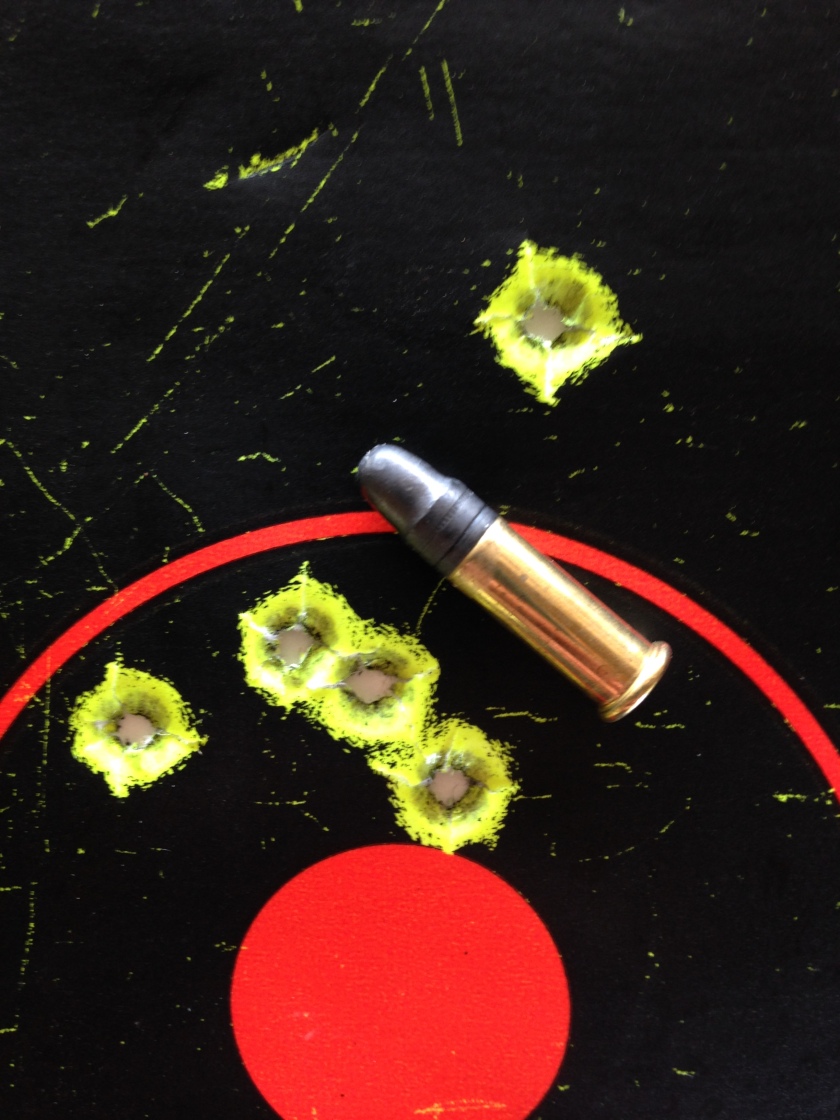
Hornady 140 gr. BTHP Match on a good day at 100 yds. 22lr for reference.
I’ll reserve the last part for data. I spent many hours working up loads, primarily with the Hornady 140 gr. BTHP match and IMR-4831 powder. I hope the data will be beneficial to those considering the .260 Rem cartridge. I tried a variety of bullets from the Sierra 85 gr. HP to the Hornady 160 gr. RN. I even tried cast loads with the RCBS 6.5-140-SILH mold (“RCBS” denoted in the chart for brevity). Accuracy was abysmal due to no fault of the mold or rifle. Hardness was lacking at around 12 bhn which caused significant leading on the crown. A separate review of loading cast bullets for rifles will address this issue. I’ll include cast data for curiosity’s sake. Cases are those of Remington, Federal, and Norma. All primers used were CCI #200. *Warning: cast bullet data using Unique with RCBS 6.5-140-SILH is unpublished and was worked up independently. Use at your own risk. I had chronographed the Hornady 123 gr. A-Max over 44.7 gr. of IMR-4831 but misplaced the data. All I can add is that the groups were 1 moa and promising.
| Bullet | Powder | Charge | Vel. Low | Vel. High | Avg. Vel |
| RCBS | A5744 | 21.0 gr. | 1916 | 1982 | 1945 |
| RCBS | Unique | 12.5 gr. | 1628 | 1669 | 1649 |
| Hornady 140 gr. BTHP | IMR-4831 | 40.8 gr. | 2633 | 2677 | 2653 |
| Hornady 129 gr. SP | RL-15 | 35.7 gr. | 2592 | 2659 | 2630 |
| Sierra 85 gr. HP | Varget | 41.0 gr. | 2962 | 3172 | 3126 |
| Hornady 160 gr. RN | IMR 7828 | 44 gr. | 2462 | 2541 | 2517 |
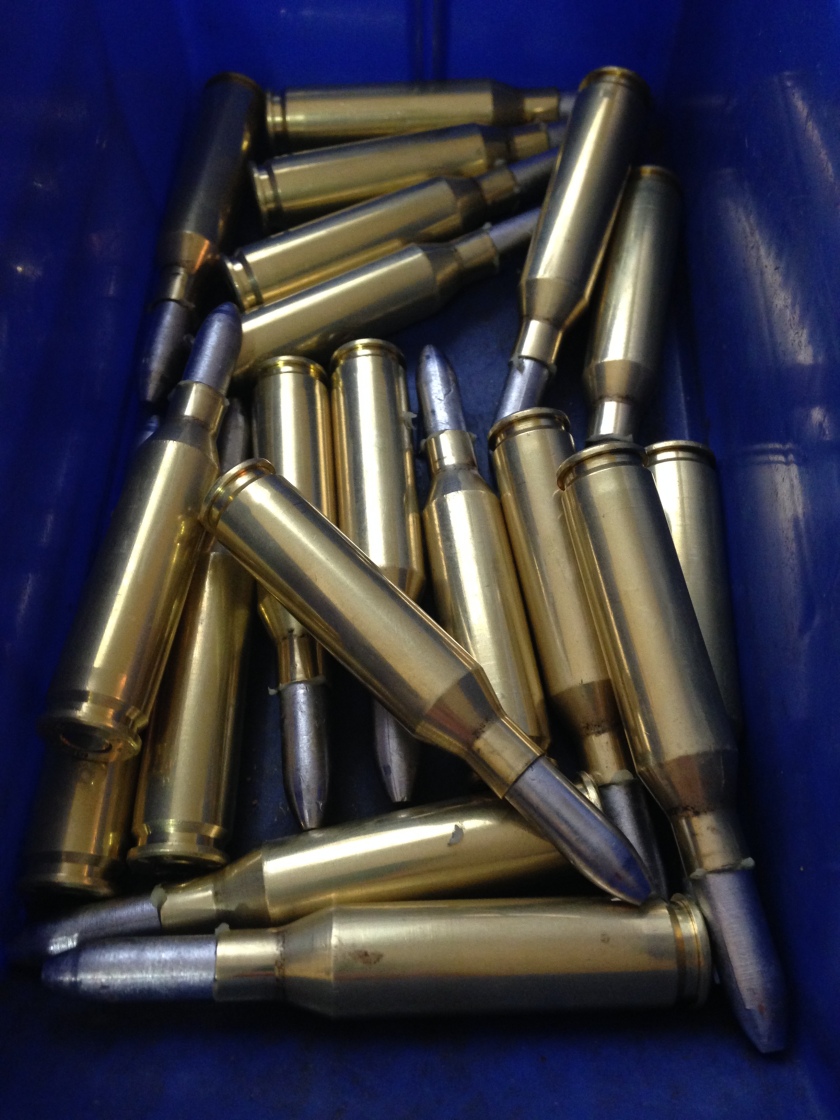
RCBS molds produce great bullets. Unfortunately, these were too soft to make any difference.

